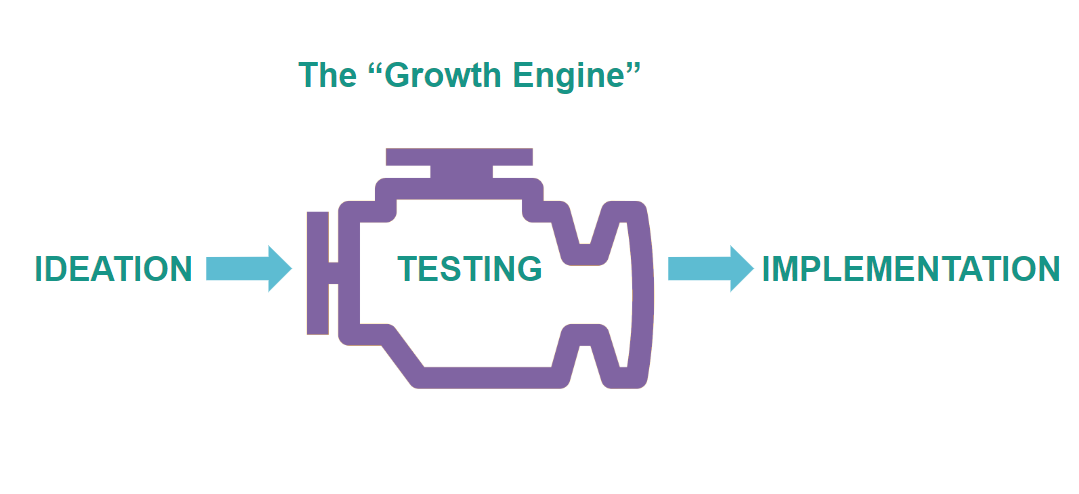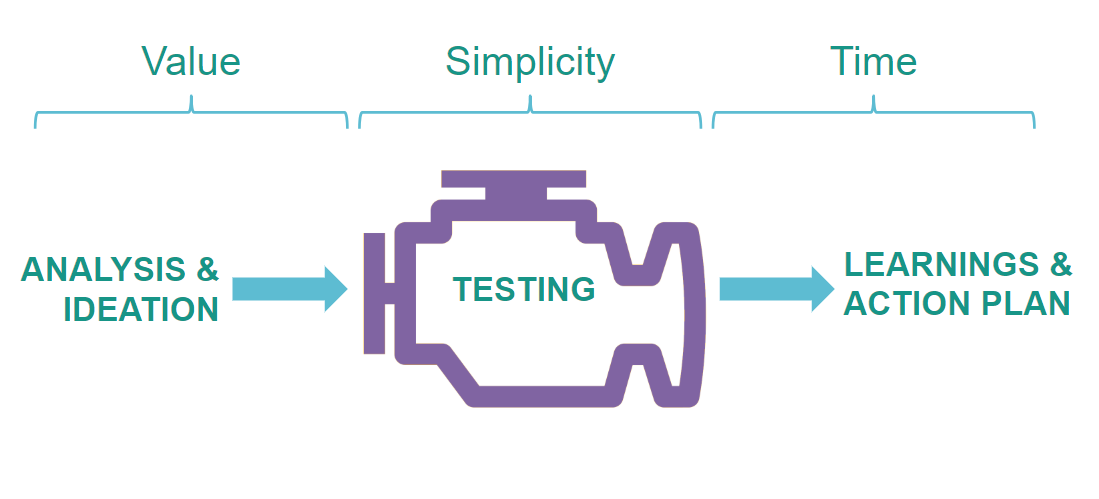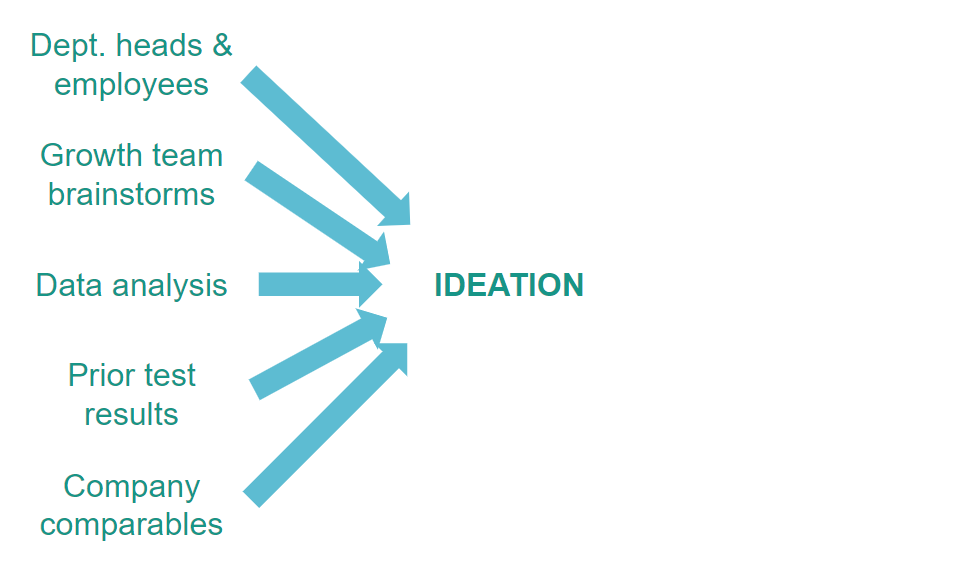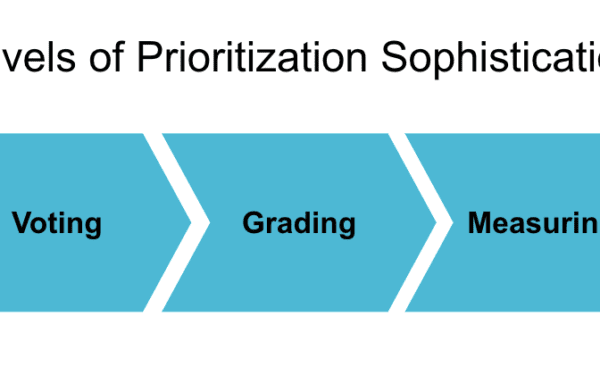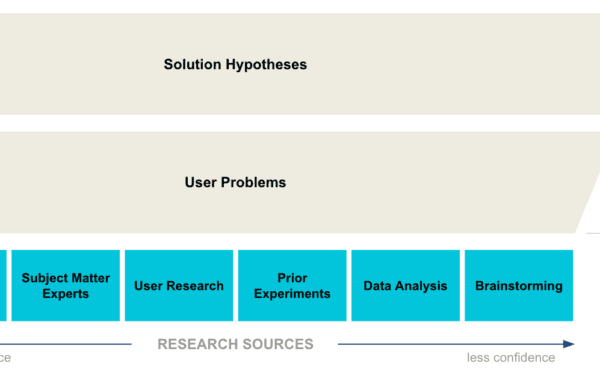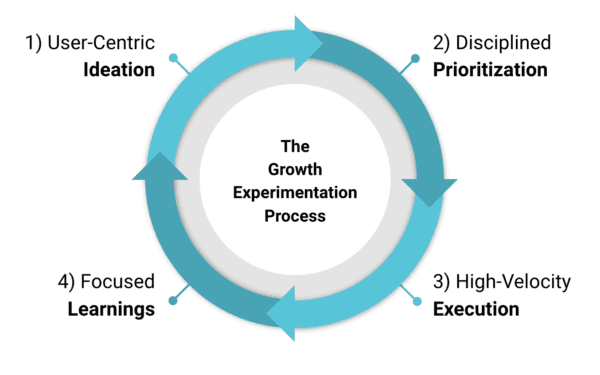“Growth” is a process, not a magic potion.
The idea of having a “Growth” org for startups has evolved over time. Initially called “Growth Hacking” because of the combination of skills from marketing and coding. And also because of famous “hacks” like the classics from Dropbox and Airbnb.
Unfortunately, the golden era of finding magical hidden gems that will propel a company towards its goals are over. Although, a tip of the cap to Bird and the other scooter startups recently for my new favorite hack where they just decided to blast their scooters all over the place –“do first, ask forgiveness later”, love it.
In today’s world, Growth is a structured process. You don’t just throw a bunch of shit at a wall and hope a golden ticket to Willy Wonka’s factory ends up sticking there now do you? You prioritize ideas, test them, implement those that are successful, rinse and repeat.
3 phases: Ideation -> Testing -> Implementation.
In each, you want to optimize for either value, time, or simplicity:
What is “the goal”?
If you don’t get this right to begin with, then you are already F’ed. The goal of a Growth team or really any team in a company is to increase the value of the company. A difference from other departments is that increasing the value of the company is the only goal and is the key purpose of a Growth team. Not just one part of the company, but the company as a whole, and of course, as fast as freakin’ possible. I think of it like this:
You want to optimize your value over time and do it in the simplest way possible. It’s kind of like a value realization rate.
The “5% Rule”.
The majority of companies define what dictates the value of the company in the form of yearly company goals. These are after all, what will determine the valuation of the company in VC’s eyes if you have defined them correctly. It is important when brainstorming to think about a specific company goal because it will force you to focus in and you develop more mature theories as you think longer on a single subject. Also, it is more difficult for your brain to brainstorm without a specific category to think about vs. focusing in on a specific subject which creates natural synergies in the thinking process.
There are a couple factors to keep in mind when brainstorming that, on the most basic level, determine the potential of an idea. They are impact to a metric, and audience size.
If you don’t think it will be able to change a metrics significantly, or doesn’t reach a large enough audience, chances are it won’t be a high-potential idea. A good baseline target to think about during early stage testing is a minimum of a 5% potential impact to a company goal. Lower than this and it isn’t worth testing, and you can probably think of other ideas that can.
Questions are more accessible than hypotheses.
Some people will tell you to think of ideas or hypothesis, but this basically means that you have already thought things through and have formed a perspective. Yet, in most cases, you or people in the company haven’t done this, so it makes it more difficult for the brain to come up with something.
I find it’s easiest to brainstorm in the form of questions, this leaves it open ended and is more aligned to the actual source of the ideas. For instance: “do our users need more education on how to use the product?”. You can think of questions basically like hypothesis, where we believe the default answer to the question is “yes”. Yes we think that our users need more education to use the product.
Where do we source these questions?
Questions can come from a number of different places, here are some of the main ones:
During the ideation phase, you can employ the “5 whys” method that I posted about earlier to help zero in on what the core principle is that you are trying to test. Also, by doing the simple estimations discussed in this article such as the potential impact to a KPI, and the exposed audience size, you can determine which questions have a high value potential if we were to answer them.
In the next post I will go through grading and prioritizing ideas as well as how to simplify down tests as a way to increase your speed.
